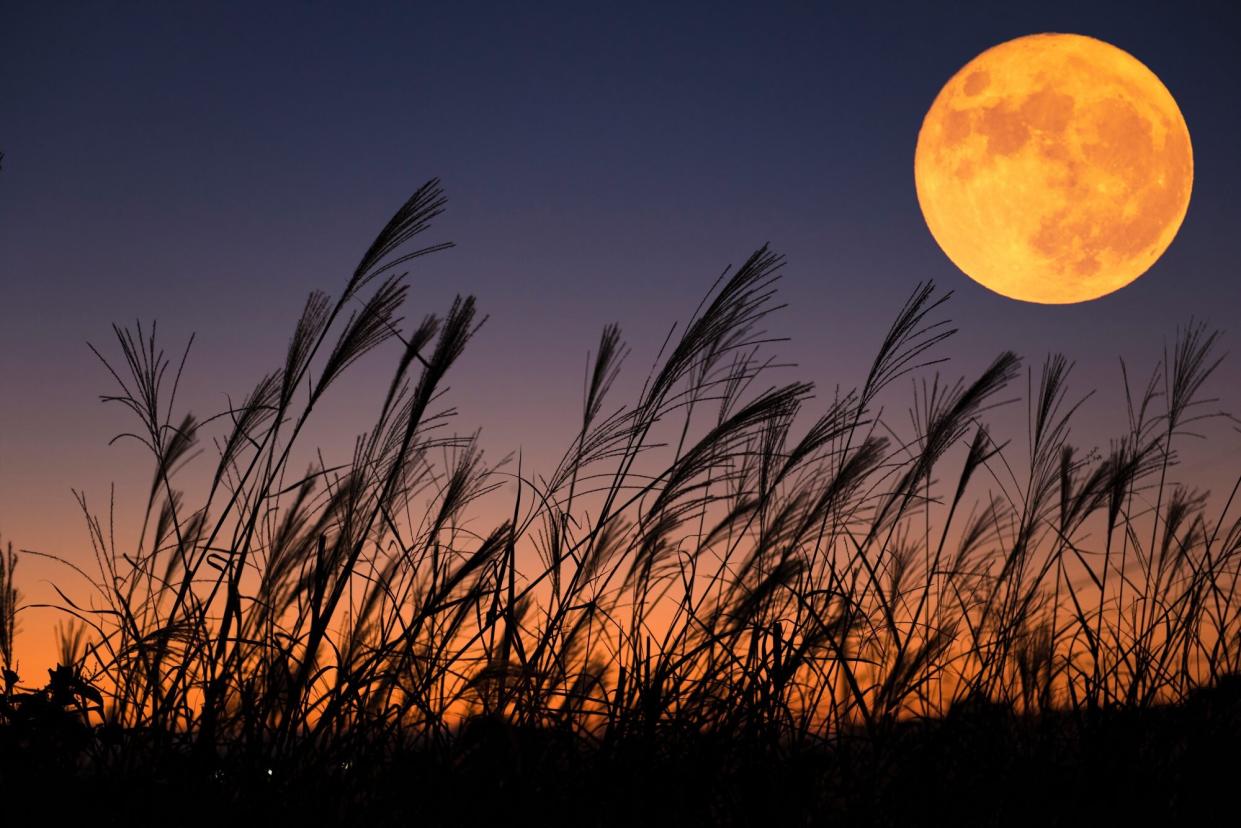The Harvest Moon Will Peak This Weekend—Here's How and When to See the Last Full Natural Satellite of Summer

- Oops!Something went wrong.Please try again later.
GETTY IMAGES
Autumn is announcing its upcoming arrival in a big way—the full Harvest Moon will appear in the night sky this weekend and its beauty is something to behold for stargazers everywhere. According to a report by LiveScience, the natural satellite will reach its peak on Saturday, September 10 at around 6 a.m., but it will also be visible in the sky as early as Friday, September 9 and into Sunday, September 11.
Though it will still shine bright, September's Harvest Moon marks the end of summer's streak of supermoons. The last of the four natural satellites was the Sturgeon Moon, which peaked on August 11. The phenomenon happens when a full moon is at its closest point to Earth, also known as perigee, during its monthly orbit and makes the satellite appear larger and up to 16% brighter.
Related: Researchers Have Discovered the First Interstellar Meteor to Ever Hit Earth
The Harvest Moon marks a meaningful seasonal shift—it will be the last full moon of the summer as fall slowly makes its way into the spotlight. According to NASA, the moniker Harvest Moon is an Old European name given to the satellite as it is the closest full moon to the autumnal equinox. The equinox is when many crops are harvested in the Northern Hemisphere and some farmers have even used the full moon's light to work late into the night.
Like most full moons, September's Harvest Moon goes by a handful of other names. It's sometimes referred to as the Fruit Moon because a handful of fruits ripen as the end of summer approaches and the Barley Moon, from the harvesting of barley. NASA states that the Algonquin tribes called this phenomenon Corn Moon, as this was the time for gathering their main crops of corn, pumpkins, squash, beans, and wild rice.

